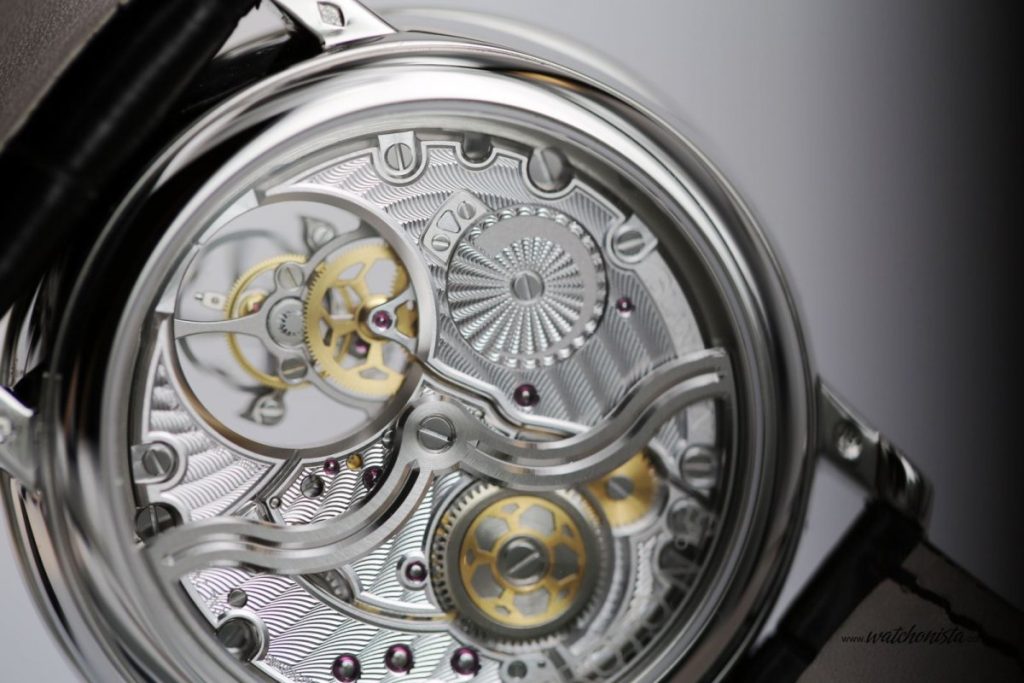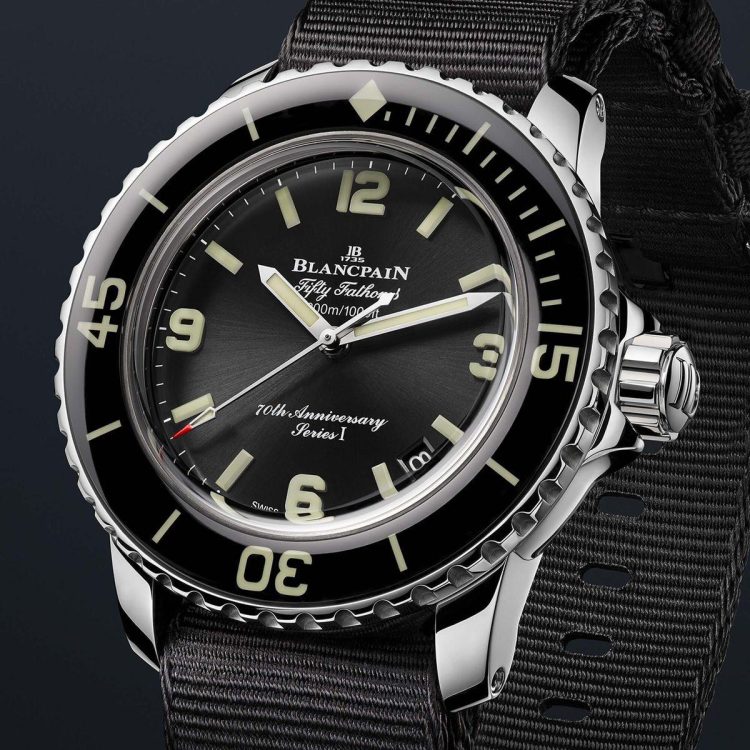Introduction
Blancpain, founded in 1735, is one of the oldest and most prestigious watch brands in the world. Known for its commitment to mechanical watches, Blancpain has stood the test of time by combining traditional Swiss craftsmanship with cutting-edge technology. This article will explore the meticulous craftsmanship, state-of-the-art technology, and innovative movements that define Blancpain watches, making them a benchmark in the luxury watch industry.
Chapter 1: The History and Evolution of Blancpain Watchmaking
1.1 The Origins of Blancpain
Blancpain was founded by Jehan-Jacques Blancpain in the small village of Villeret, Switzerland. From the very beginning, the company was dedicated to creating high-quality, mechanical watches, which would later set the stage for the innovations that would shape the brand’s future. Blancpain’s early years focused on precision and mechanical ingenuity, which would later define the company’s philosophy.
1.2 Blancpain’s Contributions to Swiss Watchmaking
As one of the few Swiss manufacturers to resist producing quartz watches, Blancpain made its mark in the industry by championing the art of mechanical watchmaking. In 1983, Jean-Claude Biver helped revive the brand, focusing on luxury and technical complexity. The brand’s legacy includes a long line of innovative complications, including the first-ever modern diver’s watch, the Fifty Fathoms, and the world’s smallest automatic movement.
Chapter 2: Blancpain’s Craftsmanship: The Art of Fine Watchmaking
2.1 The Art of Movement Making
Blancpain is renowned for its in-house movements, a hallmark of high-end Swiss watchmaking. Each movement is crafted with extreme precision, and many Blancpain timepieces feature complications such as the perpetual calendar, tourbillons, and minute repeaters. The brand’s movements are not only technically sophisticated but also serve as works of art, where every component is painstakingly finished by hand.
The Role of Master Watchmakers
- Blancpain employs some of the finest master watchmakers, who spend years perfecting their craft. They are trained in the most intricate methods of engraving, polishing, and assembling watch movements.
- Each component of the movement is hand-finished, and the intricate details on bridges, cocks, and gears are decorated with Côtes de Genève, perlage, and other traditional horological techniques.
2.2 High-Quality Materials: The Core of Blancpain’s Craftsmanship
Blancpain uses only the finest materials to build its timepieces, ensuring that every watch is not only visually stunning but also durable and functional.
Gold and Platinum Cases
- The use of 18k gold and platinum in Blancpain’s cases gives each timepiece a luxurious aesthetic, while providing strength and longevity.
Sapphire Crystals
- All Blancpain watches feature sapphire crystals, which are highly scratch-resistant and provide a clear view of the movement. Anti-reflective coatings are applied to improve visibility under varying light conditions.
Exquisite Dials and Hands
- Blancpain’s dials are crafted from precious metals like 18k gold or enamel, and many models feature hand-painted decorations. The hands of Blancpain watches are often blued steel or gold to provide a sophisticated contrast against the dial.

Chapter 3: Innovative Technology in Blancpain Watches
3.1 Advanced Movements and Complications
Blancpain is known for its mechanical prowess, and the company regularly introduces new complications and mechanical advancements. Some of the most notable innovations in Blancpain’s catalog include:
The Fifty Fathoms Movement (Automatic)
- The Fifty Fathoms diver’s watch is not just a design icon, but also an example of cutting-edge technology. The caliber 1315 movement used in the Fifty Fathoms collection is highly robust, designed for water resistance up to 300 meters, and boasts an impressive five-day power reserve.
The Tourbillon
- Blancpain has mastered the tourbillon, a complication designed to improve the precision of mechanical watches by compensating for the effects of gravity on the movement. The Villeret Tourbillon is a beautiful example of the brand’s skill in creating highly complex movements.
The Perpetual Calendar
- Blancpain’s perpetual calendars, such as those in the Villeret collection, are known for their mechanical complexity and precision. These watches can automatically adjust for leap years and months with varying days, requiring no manual corrections for the life of the watch.
The Carrousel
- The carrousel is a rotating escapement mechanism that enhances accuracy, much like the tourbillon but with a distinct design. Blancpain’s use of this technology in models like the Villeret Carrousel makes it one of the most prestigious complications in horology.
3.2 The Role of Silicon in Blancpain’s Movements
Blancpain has been a pioneer in the use of silicon components within its movements, particularly the escapement and balance spring. Silicon is known for its resistance to magnetism and wear, making it ideal for increasing the durability and precision of mechanical watches.
Silicon Technology Benefits:
- Anti-magnetic properties: Silicon is naturally resistant to magnetic fields, which can interfere with a watch’s accuracy.
- Longevity: Silicon’s resistance to corrosion means that it significantly extends the lifespan of the watch’s movement, reducing the need for frequent servicing.
Blancpain uses silicon in several high-end models, such as the Fifty Fathoms Automatique and Villeret series, where the material improves both performance and long-term reliability.
Chapter 4: Blancpain’s Innovation in Water Resistance
4.1 The Fifty Fathoms: The Ultimate Diver’s Watch
One of Blancpain’s most significant achievements is the development of the Fifty Fathoms in 1953, the world’s first modern diver’s watch. Developed in collaboration with professional divers and military personnel, the Fifty Fathoms features a rotating bezel, screw-down pushers, and a robust case designed to withstand extreme underwater pressures.
Technological Advancements in Water Resistance:
- 300-meter water resistance: The Fifty Fathoms series remains a benchmark for diver’s watches, with 300-meter water resistance and precision engineering that ensures performance even in the harshest environments.
- Hydrodynamic case design: The watch’s case is designed to minimize water resistance and ensure stability during dives.
Chapter 5: The Role of Handmade Finishing in Blancpain Timepieces
5.1 Masterful Engraving and Decoration
In addition to technical innovation, Blancpain’s commitment to handcrafting is evident in the intricate decorative finishing applied to each timepiece. The movement bridges, gears, and other components are often hand-engraved or polished, showcasing the skill of Blancpain’s artisans.
Traditional Decorative Techniques
- Côtes de Genève: A pattern of lines applied to movement components, enhancing the aesthetic value and showcasing fine craftsmanship.
- Perlage: A circular pattern that’s applied to the main plate and bridges, creating a visually striking effect while ensuring smooth movement.
These delicate finishing techniques are essential to the overall aesthetic appeal of Blancpain watches and help to reinforce their luxury status.
Chapter 6: Blancpain’s Commitment to Sustainability and Environmental Responsibility
6.1 The Environmental Impact of Watchmaking
Blancpain has also embraced a commitment to sustainability, particularly in the development of its water-resistant divers’ watches. The brand is known for supporting ocean preservation initiatives, such as its partnership with Ocean Futures Society led by renowned explorer Jean-Michel Cousteau.
Blancpain’s role in promoting sustainable practices in the watchmaking industry is an important aspect of the brand’s corporate philosophy.
Conclusion: Blancpain’s Legacy of Innovation and Excellence
Blancpain’s dedication to mechanical innovation, craftsmanship, and precision has made it one of the most respected names in luxury watchmaking. Through its use of advanced materials, meticulous hand-finishing, and groundbreaking technical innovations, Blancpain continues to lead the watchmaking world in both aesthetics and functionality.
The brand’s focus on technical mastery, coupled with its respect for traditional horological techniques, has enabled Blancpain to produce some of the world’s most iconic and sought-after timepieces. Whether it’s the Fifty Fathoms, the Villeret Tourbillon, or the Leman collection, Blancpain’s watches are a true testament to the art and science of Swiss watchmaking.
In conclusion, Blancpain remains at the forefront of watchmaking, blending heritage with technological prowess to create watches that will continue to be admired for generations to come.





































